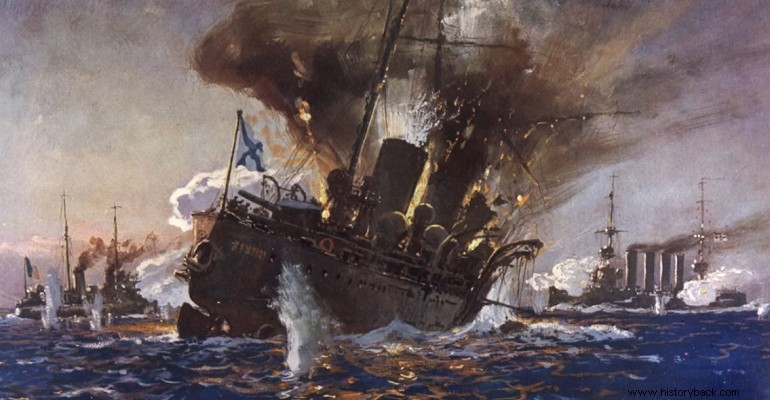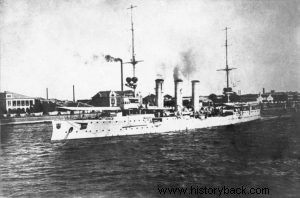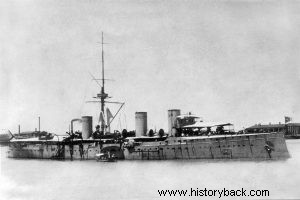
When World War I broke out, Penang, Malaysia, could hardly have imagined that it could become a field of conflict between the belligerents. The German navy had a squadron in China which at the start of the war sailed to the coast of Chile. All but one ship, the light cruiser SMS Emden.
Emden was one of the light cruisers of the Dresden class. She had a full displacement of 4,268 tons, a length of 118 m, a crew of 361 men and was armed with 10 105 mm guns. and two 18 intorpedo tubes . It developed a maximum speed of 23.5 Knots and was lightly armored.
In short the Emden was not an extraordinary ship. And yet thanks to his excellent master Karl von Müller on the contrary, he achieved results according to his abilities. For about two months he "plowed" the Indian Ocean and captured or sank over 20 Allied ships, without losing almost a single member of their crews. Miller was a fan of "clean" war.
After bombing fuel tanks in Madras, then British India, Emden turned towards the coast of Malaysia. The allies of ANTATE had, in the meantime, mobilized against it by sending many of their ships to the area with the aim of sinking it.
Arrival in Penang
Miller, in order to confuse his pursuers, but also to cause additional confusion and why not casualties, decided to sail to the then British-administered port of Penang in Malaysia. To mislead opponents as to the identity of his vessel he ordered his men to construct a false chimney so that with four chimneys the Emden resembles the British Towns-class vessels.
At about 04.30 on 28 October 1914 the Emden entered the harbor unmolested. Three allied warships were anchored in the port, the Russian protected cruiser Zhemchug , the French cruiser D'Iberville and the also French destroyer Fronde. There were also some merchant and coal carriers of the British navy.
The Russian cruiser was the most powerful of all. Having Baron Ivan Alexandrovich Cherkasov in command , the vessel had entered port two days before for maintenance. The Russian vessel was not in good condition. The Russian captain, after giving permission to several men of the crew to go ashore, left himself and went to a hotel with loving company.
Even worse, when leaving, he left the ship's ammunition stores locked so that for each of his 120 mm guns. to have a ready-to-use stock of only 12 rounds. Also the ship's torpedoes had been disabled. The Russian ship was armed with 8 120mm guns, 4 18in torpedo tubes and four 47mm light guns. It had lighter armor than the Emden but was faster than that.
The Emden slowly sailed into the harbor raising the German flag and opening fire. When it got close to the Russian vessel it fired a torpedo from a short distance. The few Russian sailors on board tried to fire back but their fire was off target (they hit an allied ship) and ammunition stock limited.
The Emden then turned towards the port exit firing another torpedo at the Russian cruiser. The Zhemchug was cut in two and sank, taking 89 of its men with it. Another 143 were injured. In the meantime the French warships had realized what was happening and had opened fire on the German vessel. However, their fire was not accurate.
Leaving the port, however, the Emden encountered the French destroyer Mousquet returning from a patrol. Before the French realized what was happening the Emden's fire tore the small boat to pieces and sank it. The Germans rescued 36 sailors from the French vessel and drove away, leaving behind confusion and destruction. Three wounded Frenchmen died during the voyage.
The dashing Russian captain was court-martialed and sentenced to just 42 months in prison, while his superior was sentenced to 18 months in prison. Both were demoted and kicked out of the navy. However, Tsar Nicholas reduced their sentences and reinstated them in the navy.

The German light cruiser Emden.

The Russian cruiser Zhemchug.
